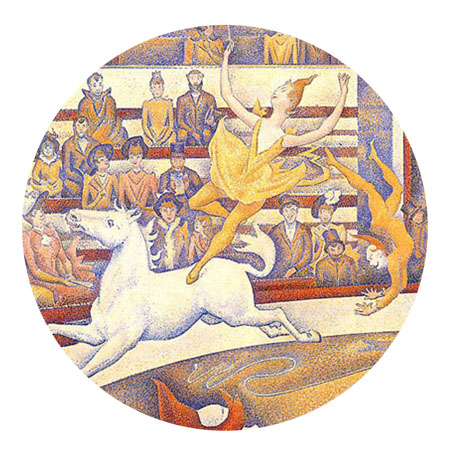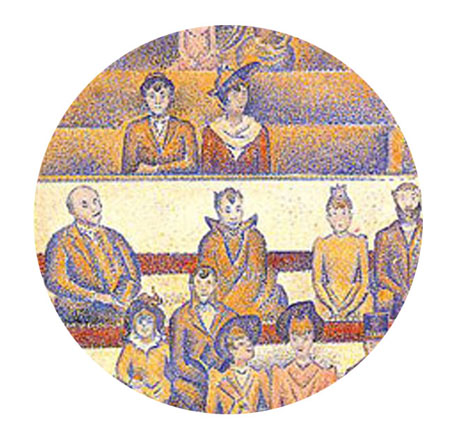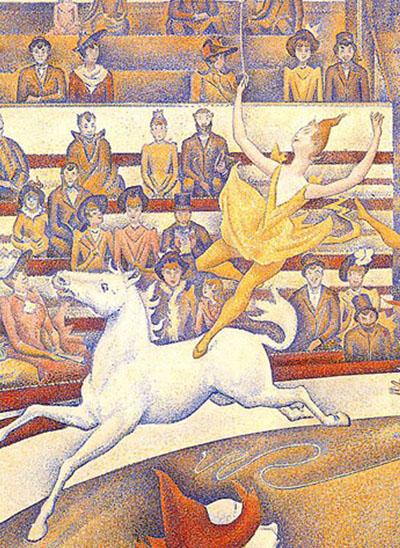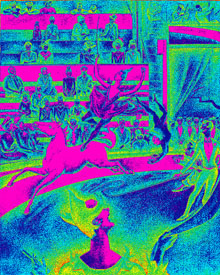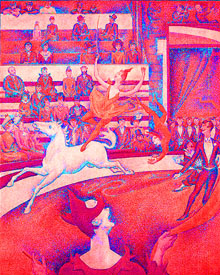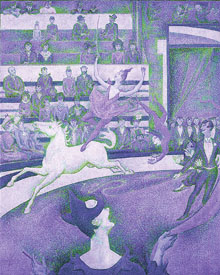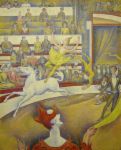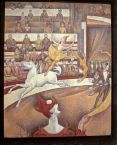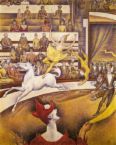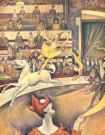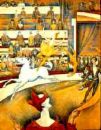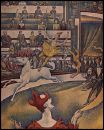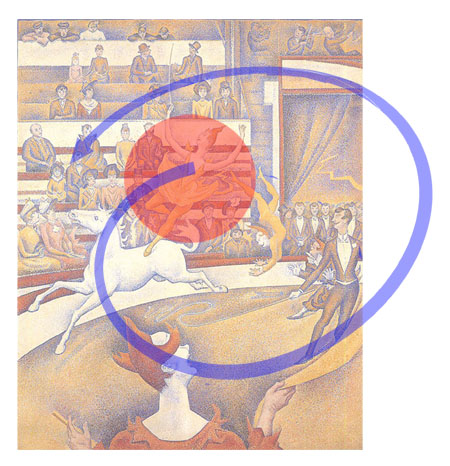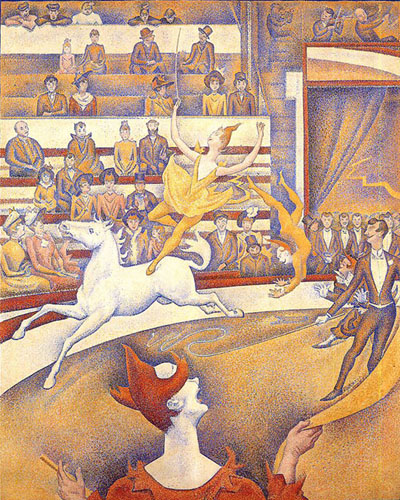
A little bit about Georges Seurat…
Georges Seurat was the founding member of the Divisionist technique, or Pointillism as it is more popularly known. Influenced by colour theorists, he took a scientific approach to emotion and harmony. He believed that a painter could use colour to create harmony and emotion in art in the same way that a musician uses variation in sound and tempo to create harmony in music. He said ‘Art is Harmony. Harmony is the analogy of the contrary and of similar elements of tone, of color and of line, considered according to their dominance and under the influence of light, in gay, calm or sad combinations’ (letter to Maurice Beaubourg, 1890).
In his exploration of colour combinations, Seurat opted for an accurate, pointillist method of mixing colours optically as opposed to doing so manually on the palette. Every dot is scientifically thought out before being executed on paper.
Seurat’s theories can be summarized as follows: The emotion of gaiety can be achieved by the domination of luminous hues, by the predominance of warm colors, and by the use of lines directed upward. Calm is achieved through an equivalence/balance of the use of the light and the dark, by the balance of warm and cold colors, and by lines that are horizontal. Sadness is achieved by using dark and cold colors and by lines pointing downwards.
Through this calm, calculated approach, Seurat revived order and contour to painting, which had somewhat been lost in the quest for Impressionism.
About THE CIRCUS…
THE CIRCUS, is his last large-scale painting before he passed away unexpectedly at the age of 31. In fact, this painting remained unfinished at the point of his death.
This painting, portrays a lively public entertainment at the Cirque Fernando. It depicts a moment in the performance, with the back of a clown, placed closest to the viewer. He seems to be part of the performance, together with four other performers: a lady acrobat, who is balancing on the back a white horse, another acrobat just slightly beside her, the ringmaster and another performer who is partly shielded by the ringmaster. The poses of the performers, some in midair, show that it is a lively performance, full of fun and action. They are performing within the confines of a circular stage, with rows of spectators encircling them. The spectators seem to come from two social classes – the well-groomed upper class closest to the action in the front seats, and the lower classes slouched at the back.
The composition in this painting is also dramatically different from all his other paintings. In contrast to his other works (e.g. Sunday Afternoon on the Island of La Grande Jatte, 1884 – 1886; Circus Sidewalk, 1887; El Baile Del Chahut) where his characters are rigid and still, because of his obsessive concern for pictorial order; in this painting, he used flamboyant, curvy lines to indicate lively activities and exhilirated excitement. These flamboyant and curvy lines are purposefully contrasted with strong horizontal lines of the spectator seats and the angular lines of the door way to create a balance. On the whole, the composition is depicted in an intellectual rather than responsive manner, with the intention to explore his theories about lines and colours. This composition also shows the influence of Jules Cheret, a poster-artist who often concentrated the action and drama of his compositions in the lines and space above the horizontal axis. In this case, similarly, most of the action occurs above the curved line of the wall demarcating the stage from the spectators.
By placing the group of performers in the foreground, clearly, the performers are the focus of this painting. The focus is accentuated by the clown – the fact that he appears to be right in front of the viewer, with his back facing the viewer and he holding something that looks like a ‘sash’ forming almost a curve that ends and points towards the acrobats and the horse. The spectators form the backdrop to this scene, while at the same time giving texture and adding interest to the whole painting.
Despite the lively movements of the performers, a surrealistic effect is created, partly from his use of the Divisionist technique and partly because he subtly reduced the characters and objects down to simple, one-dimensional planes and volumes. Tones are applied, on the whole, not so much from observation but for the purpose of demarcating one plane from another and one character from the next. This surrealistic effect suggests a sense of stillness, as if the characters are frozen in time; while the harmoniously warm interior, evokes a deep sense of calm in the viewer.
